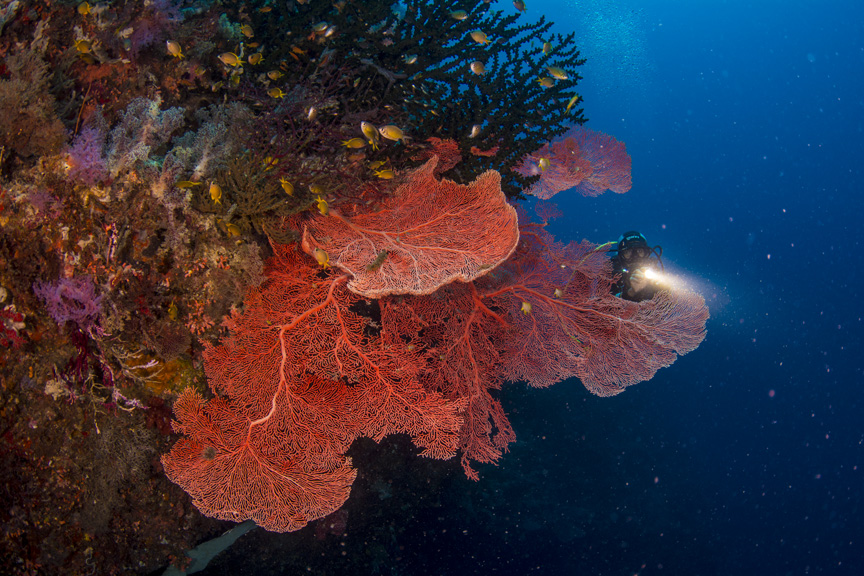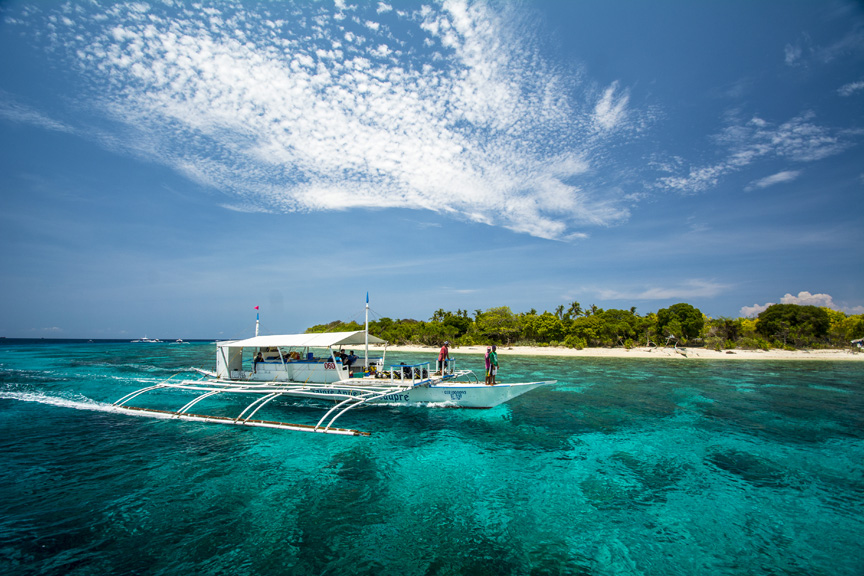Darin

You’ll most likely fly into Cebu and then make the short plane ride or ferry trip to Dauin via Dumaguette. In fact, when divers say they are going to Dumaguette, the capital city of Negros Oriental, they are really on their way to rustic Dauin.
Just 30-60 minutes from the Dumaguette Airport, this longtime macro hotspot rivals Anilao for the odd, rare and wonderful. While still retaining its beachy charm, the area is getting trendier with a mixture of laid-back hotels and more upscale dive boutique hotels, condos and residences.
Most of the dives here are sandy or rocky bottoms sloping into the deep. The dive sites offer a variety of critters for divers to discover. In all, there are at least 60 known dive sites between Sibulan, Dumaguette City, Dauin and Apo Island. For the macrophotography nut, this is heaven. Secure a guide with good knowledge of the local Dauin habitat and give him or her a wish list. Then have a blast getting wonderful photos while checking some cool critters off the macro bucket list. Spend four or five days here and then head to Cabilao via Balicasag.
Balicasag

This tiny protected marine area is very popular with divers. The island has only five dive sites, but they are all good. There is a dive operator and hotel on the island, but day boats arrive from Panglao, Cabilao and even Dauin.
Balicasag’s marine sanctuary status has helped it flourish. It has pretty blue waters with sandy flats running to deep drop-offs. And turtles…so many turtles. Green sea turtles of all ages from young to ancient can be seen in the shallows. It is a wonderful day trip and, at the end of the day, an hour boat trip will land you on the beaches of Cabilao.
Cabilao
This rugged, small limestone isle is a relaxed place with five picturesque villages, no automobiles and a good range of beachfront hotels and dive operations. The triangular- shaped island sits to the west of Bohol, facing Cebu Island.
Divers love this place, as it has a nice variety with 20 dive sites all around its shores, as well as a couple other spots on nearby islands. Most sites offer easy diving; you step in starting deep, with interesting terrain all the way to the shallows.
You can enjoy current-fed points with batfish, barracuda and sturgeon fish schools, and spot large and small sea turtles. There are some absolutely stunning soft coral displays along the walls as well as large gorgonian sea fans home to pygmy seahorses and other large sea fans.
You can easily spend another four days here before heading to a new place in Bohol that is getting noticed called Anda.

Anda
The Anda area is a relative newcomer to the diving scene but is being developed while balancing tourism and conservation. Getting to Anda is a pleasant ocean-side ride along the southern coast where fruit stands line the road and rice paddies flourish.
Dive resorts and retreats are situated along the coast where limestone cliffs, separated by sandy beaches and some scattered rock islands, cater to divers in quiet and natural surroundings.
Boutique resorts such as Amun Ini are dedicated dive resorts that specialize in finding macro creatures. The guides are popular with all levels of divers, photographers and videographers. They will impress you with their knowledge including the Latin names of odd and unusual marine critters found here.
For miles along the shore, shallow reef flats are covered in beautiful corals that extend to drop-offs, ending in sandy slopes that extend into the depths. The limestone walls present some canyons, cracks and crevices and even small caves. These walls and overhangs hold plenty of sponges, large soft coral trees and gorgonian sea fans.
Below these drop-offs are sandy flats ranging from areas with various coral heads and cleaning stations to deeper sites with huge black coral gorgonian bushes.
Divers can see hawk fish in the big black corals and the odd sawblade shrimp in small black corals. The beautiful Coleman shrimp pairs live in fire urchins and so do the wonderfully patterned zebra crabs.
This area has only been thoroughly explored in the last half-decade, and it seems every macro critter on your bucket list can be found here. The area is still largely undeveloped and quiet.
Spend another four or five days here, and you’ll have an amazing two-week dive safari to some of the most amazing reefs in the western Pacific.

Getting There
Cebu Pacific and Philippine Airlines have daily flights from Haneda and Narita airports to Cebu Island.
When to Go
March to May is the summer season: expect clear skies and calm waters. It’s a great time for diving, but be prepared for the heat. June to August is typhoon season, so keep an eye on the weather forecast as it can help you avoid poor visibility and travel. November to February is a popular time to visit, as temperatures are milder. People come to enjoy the long Christmas celebrations, so be sure to book early.




